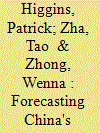| Srl | Item |
| 1 |
ID:
120080


|
|
|
|
|
| Publication |
2012.
|
| Summary/Abstract |
This article examines as to whether past stock prices in the Colombo Securities Exchange (CSE) exhibit predictability of future prices by using various statistical tests for the period from 1985 to 2009 on daily data. The findings of various statistical tests generated mixed results. The results of tests on serial correlation, runs test, variance ratio test and tests on the day-of-the-week effect rejected the weak-form of Efficient Market Hypothesis, whereas Augmented Dickey-Fuller (ADF) test and Phillips Perron (PP) unit root tests as well as the month-of-the-year test failed to reject the presence of random walk. Findings of the ADF and PP test statistics implied that daily changes in stock prices cannot be predicted, so that no investor can earn abnormal profits by exploiting past stock price patterns. This indicates the presence of weak-form efficiency in CSE. However, the results of serial correlation tests, runs test and variance ratio test imply that prices of ASPI do not reflect past prices, indicating that future movements of the stock prices can be predicted by using past price movements. The idea that past price information can only partially predict the future movements of prices/returns indicates that other information is also vital in changing stock prices/returns. The article concludes that the weak-form inefficiency is the normal situation in the CSE.
|
|
|
|
|
|
|
|
|
|
|
|
|
|
|
|
| 2 |
ID:
149757


|
|
|
|
|
| Summary/Abstract |
Although macroeconomic forecasting forms an integral part of the policymaking process, there has been a serious lack of rigorous and systematic research in the evaluation of out-of-sample model-based forecasts of China's real GDP growth and CPI inflation. This paper fills this research gap by providing a replicable forecasting model that beats a host of other competing models when measured by root mean square errors, especially over long-run forecast horizons. The model is shown to be capable of predicting turning points and to be usable for policy analysis under different scenarios. We find that M2 supply, rather than interest rates, is a key variable for forecasting macroeconomic variables. Annual GDP growth for the next five years is predicted to be close to the 6.5% official target and a future GDP growth path is predicted to be of L-shape rather than U-shape.
|
|
|
|
|
|
|
|
|
|
|
|
|
|
|
|